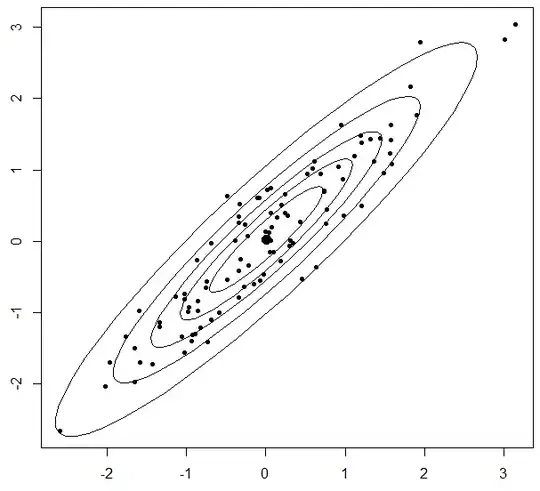I currently have a 2D probability density function and need to draw a 2D ellipse that circumscribes 50% of the probability "mass" (if that is the right terminology).
I see lots of articles on how to draw these ellipses for traditional x,y scatter-plots, but none for 2D probability density functions.
My attempt involves evaluating the bounds for which the double integral of the pdf equals 0.5. Unfortunately this gives me a "box" that contains 50% of the probability mass instead of the ellipse that I need.
Any ideas on what I could try or how I could modify the box to be an ellipse? Here's a source that could be useful in some way. Specifically pg.24.
http://web.ipac.caltech.edu/staff/fmasci/home/astro_refs/GaussianPDFs_ErrorProperties.pdf
Thanks for your time.
